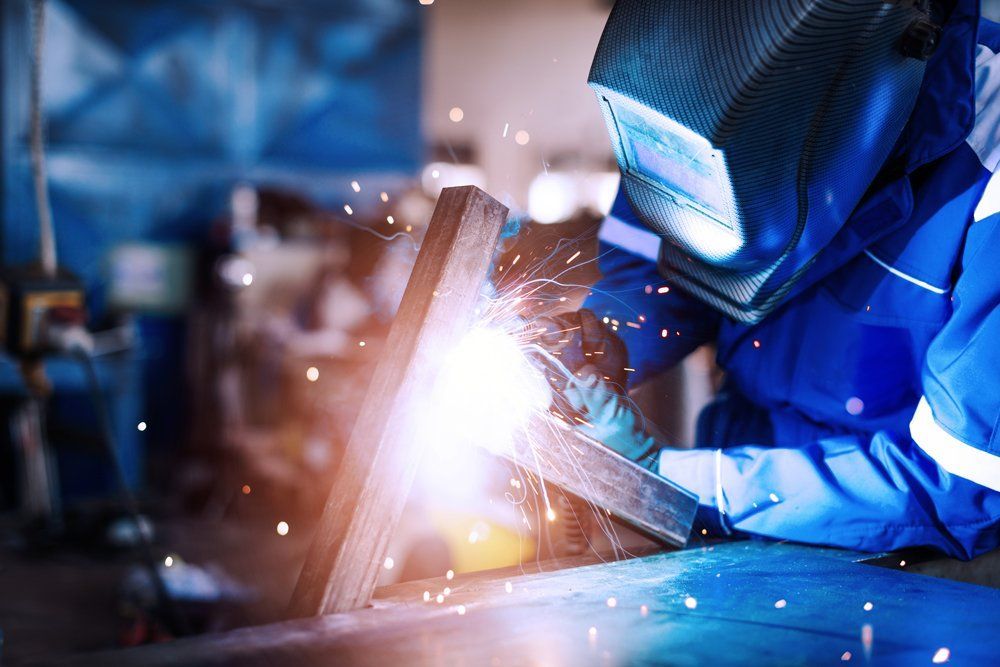3 Common Reasons Why Weld Integrity Can Weaken Prematurely
A weld can lose its integrity quickly or fail prematurely for several reasons. Some of the more common reasons for early failures involve things that occur during welding. Here are three reasons why a weld can lose its integrity fast, and how you can spot signs of it happening.
1. The Weld Picked Up Contamination
Any dirt, debris, paint, rust, or other contaminants on and around the metal can become part of the weld. Those pockets of debris will make their way into the weld during the welding process. These impurities can weaken the integrity of the overall weld. A welder must properly clean the metal and area where they will do their work.
The method for cleaning the metal will depend on the type of metal the welder works with. Not all cleaning methods work for all forms of metal. Proper cleaning and prep work will also depend on the type of welding the welder will use.
You can tell if you have a contaminated weld if the joint contains pockmarks, bumps, and other signs that something's buried in the metal. You can also look at the weld to see if the area immediately around the weld bead appears a little cleaner and more polished than other areas further away from it.
Any outright signs of joint deterioration or holes should prompt you to seek weld repair sooner than later. Your weld may have picked up corrosive elements over time as well and may need a professional to ascertain its continuing integrity.
2. The Weld Received Improper Heating
To achieve a proper bond, both sides of the weld need adequate heating. Preheating and post-heating the metal is an important step that requires experience and expertise to accomplish properly. Preheated metal helps to prevent several types of weld cracking and improves the mechanical properties of the weld.
Improper heating can lead to more than just a bad weld, although that's a worrisome outcome itself. Overheating of the adjoining metal that's not part of the weld joint can cause that metal to lose some of its properties. The new weld will now have to take on the added stress of the distorted metal, which can cause the weld to weaken or crack prematurely.
Cooling the metal after heating it must also occur in the right way. Some metals and welds may need controlled cooling to help with the quality and integrity of the weld. The welder may even need to perform annealing by applying heat to the metal to facilitate that controlled cooling.
You can tell if your weld suffers from improper heating or cooling if it has a crack adjacent to the joint or heavy discoloration on one side but not the other. Weld repair can often strengthen these types of welds or prevent them from cracking further.
3. The Weld Trapped Corrosive Gases
- Hydrogen
- Oxygen
- Nitrogen
Each of these things can become holes in the metal and eventually lead to cracks, breaks, and reduced load-bearing. You will see signs of porosity clearly in most cases. The gases will form a series of holes or cavities in the metal.
Fatigue failure and weld deterioration can cause expensive and sometimes catastrophic problems if left unchecked. Look out for signs of issues with your welds. If you see anything indicating these problems, or suspect any other issues, inquire about weld repair from a professional welding service.
At Sam's Welding, Inc. , we have highly qualified, certified, and experienced staff ready to commit to your welding job. For professional welding services and repairs, contact us today.
contact information
Phone: (619) 281-2709
Address: 4821 UNIVERSITY AVE STE B San Diego, California 92105
Serving The San Diego County: San Diego | El Cajon | La Mesa | Santee
License numbers:
#804664
Business Hours:
- Mon - Fri
- -
- Saturday
- -
- Sunday
- Closed
Emergency Services Available and Walk-ins Welcome





visit our location
Proudly Serving: San Diego, San Diego Metro, Chula Vista, La Jolla, Carmel Valley, Rancho Santa Fe, Fairbanks Ranch, Mira Mesa, Carmel Mountain, Rancho Bernardo, Rancho Penasquitos, Escondido, La Mesa, Spring Valley, Coronado, Point Loma, Bonita, El Cajon, Oceanside, Carlsbad, Solana Beach, & Del Mar.

